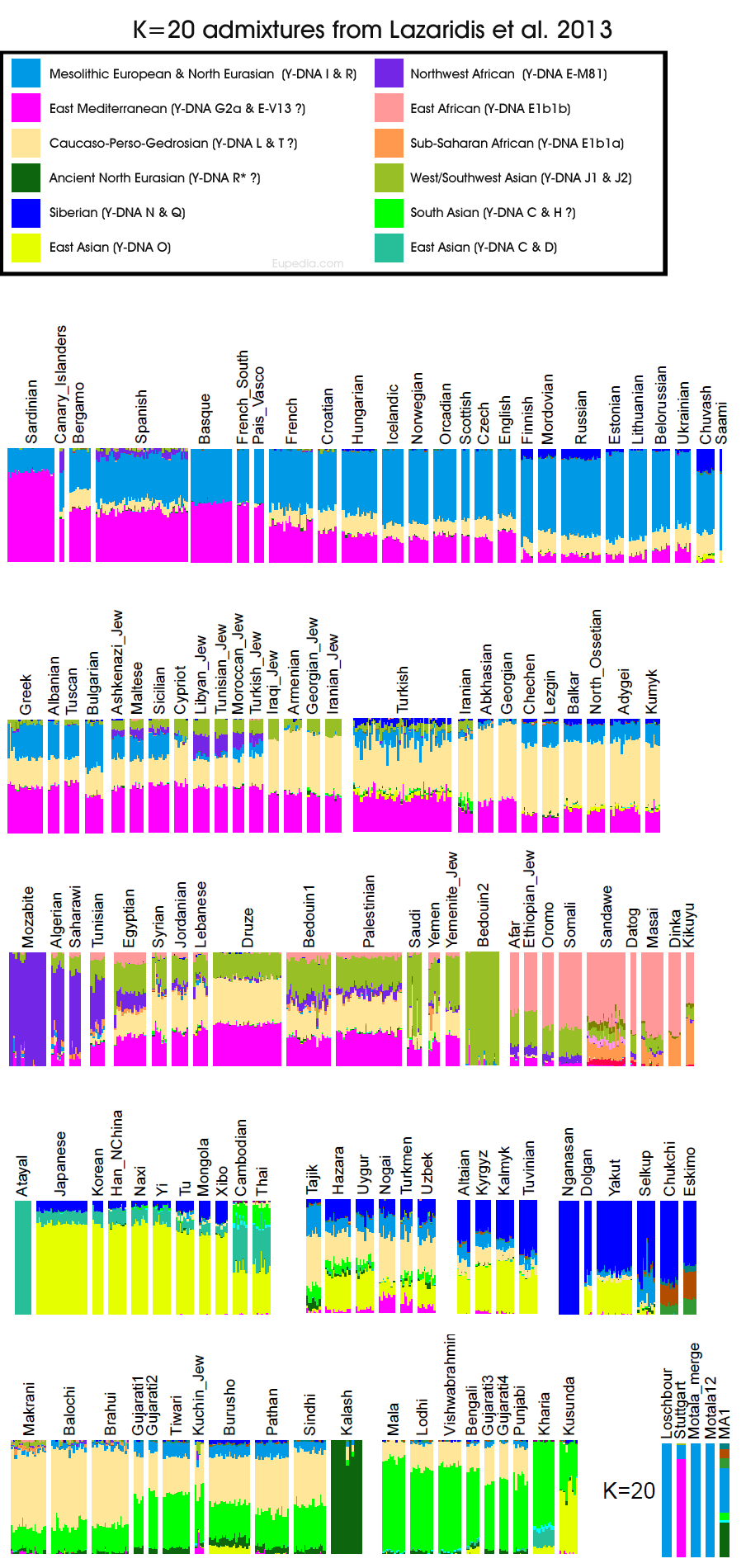Sile
Banned
- Messages
- 5,110
- Reaction score
- 582
- Points
- 0
- Location
- Australia
- Ethnic group
- North Alpine Italian
- Y-DNA haplogroup
- T1a2 -Z19945..Jura
- mtDNA haplogroup
- H95a1 ..Pannoni
Was there some big discovery of ancient Dna from Republican Rome and then from the time of Julius Caesar and then again from the later Empire and they were all compared and somehow I missed it? Or is this anthrofora genetics and history, perhaps?
These are guesses, and not very well informed guesses either. Had you actually done any academic research into the subject you would know that the number of Sub Saharan Africans imported into Europe by the Romans was very small; the empire only reached the Sahara. (It's true we have the remains from the Roman era of a rather wealthy SSA woman in northern Britain, but these are exceptions rather than the rule, I think.)There was trade with SSAfrica, yes, and East Africa, and so some were bought and sold, but nothing like the numbers who came into Iberia, for example, especially Portugal after the New World was conquered. Watching "The Gladiator" doesn't count as a history lesson, you know.
Second of all, slaves came from all the Roman conquests, which means there were just as many, if not more, British and Gallic and German and Dacian and Thracian slaves as there were Greeks, and Syrians, and then Jews. You might find it interesting to read about how the sale of slaves from Gaul made Caesar such a wealthy man that he was able to buy the support of the Roman mobs.
Third of all, many slaves were freedmen who had sold themselves into slavery.
Fourth of all, slaves were used, used up, usually, all over the empire, on the galleys, in the mines, and on the latifundia, and not just in Italy, and increasingly so as the Empire went on. Given the results from Ralph and Coop discussed below, most of them didn't survive to procreate. Not even the many women put to work in brothels were allowed to keep their children, as the many grave sites full of newborns and aborted fetuses can attest. It wasn't like the American south where because the importation of slaves from Africa was outlawed relatively early on they had to breed them; for a long time during the Empire there was always a new rebellion on the horizon, so they could afford to "waste" them. It's certainly a terrible thing, but those were terrible times, very brutal indeed.
Now, it's true that the slave system during the Roman Empire was different from that of the American south in that the exceptionally able slaves sometimes managed to get their manumission and rise in society, occasionally to great heights, because "racism" as we understand it today didn't really exist. You have to imagine an American south where enslaved Africans were present, but also freed Africans who owned their own shops, and a few who could become very wealthy, and even wind up in the national legislature. It's difficult to imagine, yes, but that's how it was in the Greek and Roman worlds.
So, you would think there would have been some gene flow into the "native" population from these freedmen, whom one would have to assume included Gauls and Germans and Dacians as well as Greeks and Syrians and Jews, unless you think the northerners were dumber and less able on average than the Easterners. Of course, that might have been true to a certain extent. An educated Greek scribe or Syrian entertainer or Jewish metal merchant might have been a lot more valuable than some farmer from the north who might just be sent to a latifundia or mine, but I don't think we know enough to speculate about that.
As to how many manumitted slaves there might have been in any particular country, of what particular ancestry, and how much gene flow there might have been into the "native" population, I don't know. I used to think there must have been a significant amount of it. However, if Ralph and Coop were correct in their IBD study (and don't modify their results in their new upcoming paper), there has been no significant inflow of new genetic material into Italy since about 300 BC, which is late enough for the Celts (Gauls) into northern Italy, and the Greeks diffusing up from Magna Graecia, but not late enough to incorporate hordes of slaves from anywhere, either from Europe or the Near East.
"There is relatively little common ancestry shared between the Italian peninsula and other locations, and what there is seems to derive mostly from longer ago than 2,500 ya. An exception is that Italy and the neighboring Balkan populations share small but significant numbers of common ancestors in the last 1,500 years."
Also, "we have seen significant modern substructure within Italy (i.e., Figure 2) that predates most of this common ancestry, and estimate that most of the common ancestry shared between Italy and other populations is older than about 2,300 years."
I have wondered if perhaps it doesn't register as "new" gene flow because it's just the same old "Near Eastern" farmer ancestry that came into Europe with the Neolithic, but they seem to indicate not. Also, there's the "Italian cline" to consider, where, as Ralph and Coop put it, the Italian cline shows a " distinctly bimodal distribution of numbers of IBD blocks that each Italian shares with both French-speaking Swiss and the United Kingdom, and that these numbers are strongly correlated. Furthermore, the amount that Italians share with these two populations varies continuously from values typical for Turkey and Cyprus, to values typical for France and Switzerland."
If slaves came from Britain and Gaul and Germany and Dacia as well as Greece and the Near East, did they decide to send all the slaves from the Near East to the south and all the Germans and Gauls to the north for some reason? That doesn't seem to make any sense either, so maybe they're correct.
See: Ralph and Coop for the source of the quotes.
http://journals.plos.org/plosbiology/article?id=10.1371/journal.pbio.1001555
As for physical appearance, the Romans were by no means all short and dark. Regardless, what would that have to do with whether the Italics were related to the Celts? You are aware that the two languages are very related yes? And that they came from the steppe, presumably, with the Indo-Europeans? And that the Yamnaya Indo-Europeans were "darker" than modern Europeans, even darker than many modern Italians or Iberians? You're also aware that not all the "Celtic" tribes were fair? Have you ever heard of the Silures? Perhaps you haven't read all the recent papers about the relatively recent selection for "fairness" in Europe and it's relationship to the environment?
I would suggest you use our search engine. It's quite good...there are numerous papers and discussions which might help you catch up.
you need to take it step by step.
Romans where once only Latin
after they conquered south-italians, the Romans where in majority south-Italians
after they conquered etruscans and umbrians they gained some central italians, but the majority where still south-Italians.
At the time of the hannibal wars there was only south and central italians as Romans.
At the time of the MAcedonians wars there was only south and central italians, plus Iberians
At the time of the Gallic wars , there was only south and central italians, Greeks plus Iberians plus numibians ( from north africa )
At the time of the British invasion , there was only south and central italians, Greeks plus Iberians.
etc
The composition of Romans was different in every century
The Time of the Republic was Different to the time of the Empire in regards to Roman legions









